Cayetana Saiz is a professional family photographer from Spain who is producing some amazing astrophotography images like this EPOD winner:
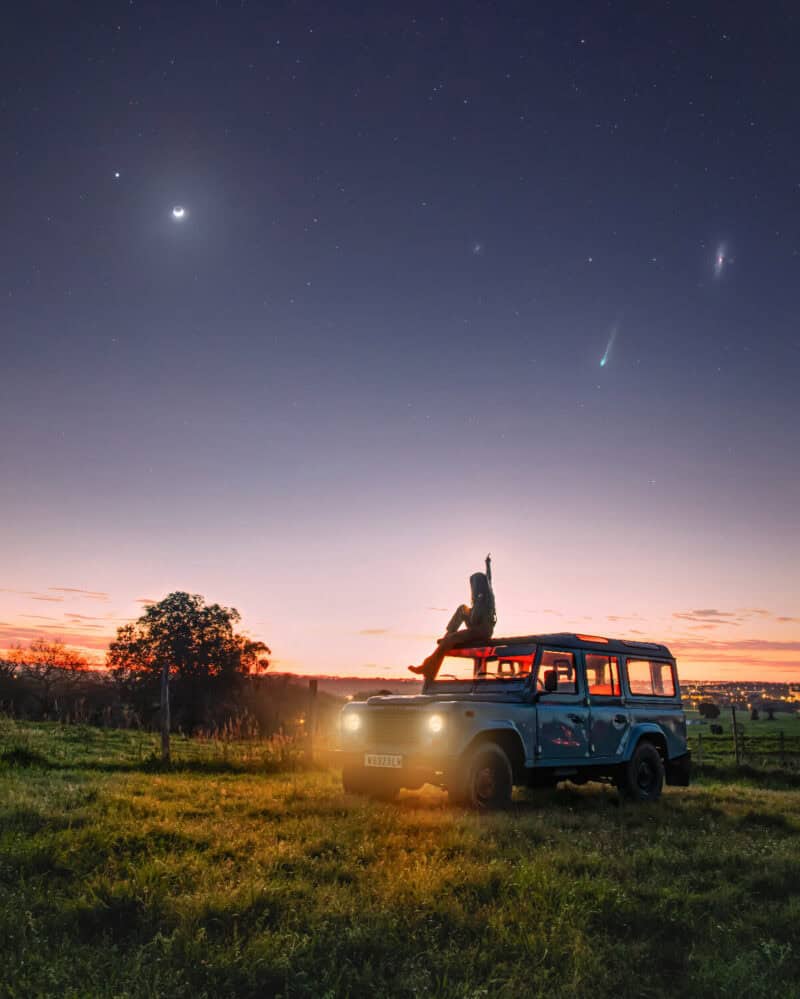
Learn more about how she does it in this interview and you can also learn astrophotography from Cayetana in this course:
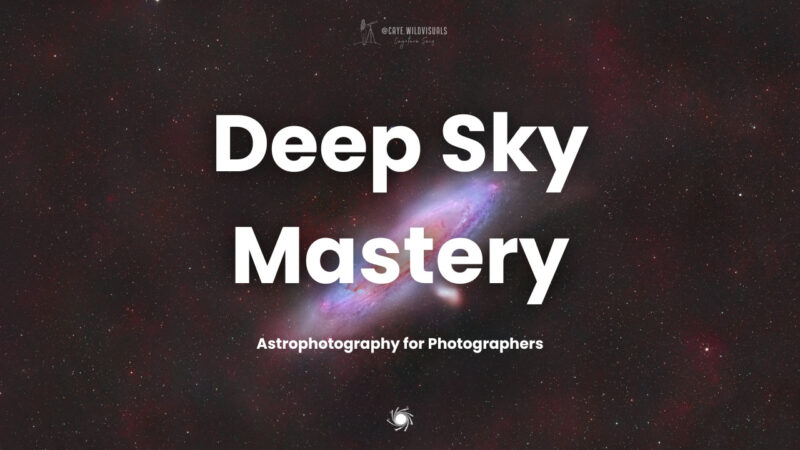
“Learning to photograph space is a true gift, because not only do you feel capable of doing something amazing, but you also feel connected to the universe to which you belong, from which you come”
What’s your focus with photography?
I have been a professional photographer for 13 years and specialize in children and family photography.
Outside of this, what I currently enjoy most is night photography, deep space astrophotography (which I discovered a year ago), landscape, travel and wildlife photography.
But at the moment, I don’t support myself financially with these.
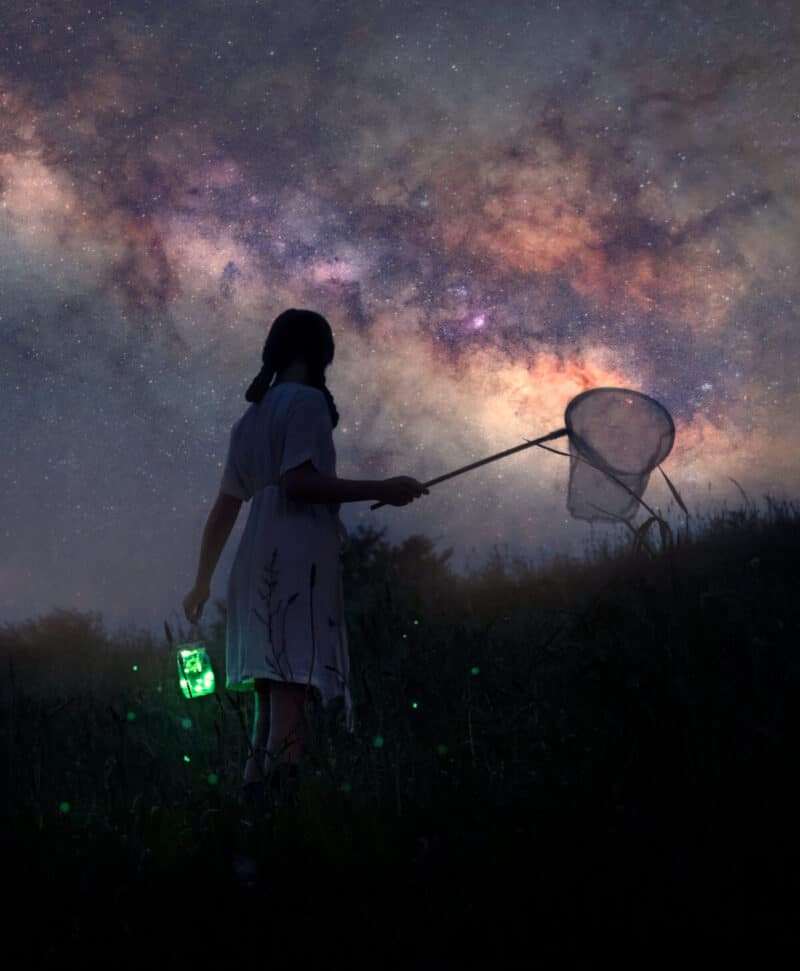
At the moment my main goal in astrophotography is to be able to merge deep space with travel and landscape photography.
I believe this is possible by photographing nightscapes during my trips and including wide field photography, for instance, large regions of nebulae and stars.
I think that something very attractive for the general public (not astronomers or space enthusiasts) is being able to compare the dimensions of these targets. Because it is essential to compare them with references known to the human mind – like the earth’s landscape.
For regular people this has more value than data with astronomical figures, and the image has more interest due to its composition.
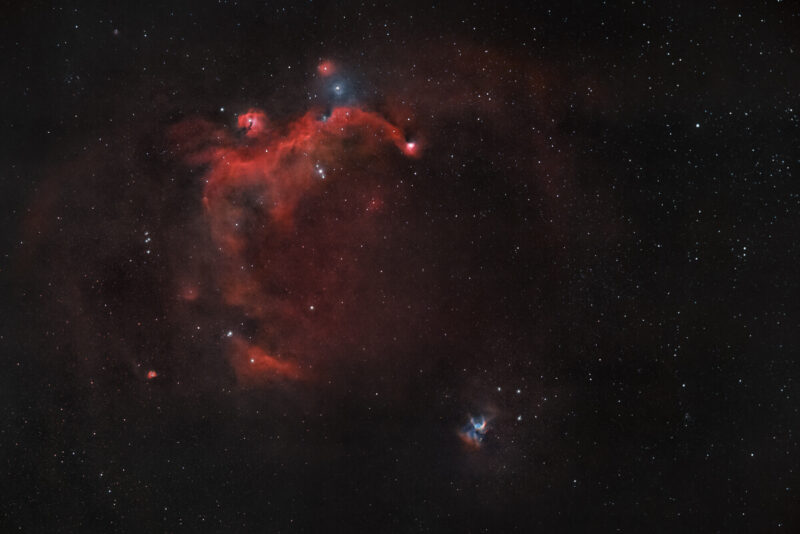
“I have experienced the most beautiful and incredible moments since I started astrophotography.”
Where do you do your imaging?
I live in Cantabria, on the northern coast of Spain.
It is an extremely beautiful region full of natural resources and landscapes (mountains, beaches, rivers, lakes, historic towns…). Although it is not the ideal place to live or work for astrophotography, due to the cloudy and rainy weather.
When a clear night is expected, I set up my equipment in the garden at home.
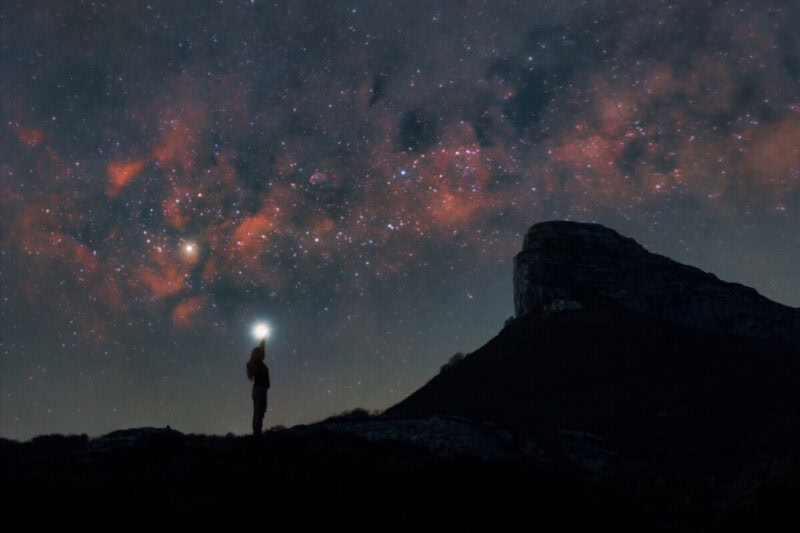
I am lucky to live in a house in the countryside, far enough from the capital to be able to capture images with a CLS (City Light Suppression) filter and obtain some good results.
My garden is what allows me to photograph the sky for so many nights during a year.
I only travel to other sites and darker skies sporadically, for example the mountains of the Picos de Europa National Park, or to the Astronomical Observatory of Cantabria.
I would like to do it much more, but I am limited by my work, my children, my animals, and other responsibilities.
Preparation to travel can be very complicated and also when I do this I am not able to take advantage of as many nights as I do taking photographs from my garden on any day of the week.
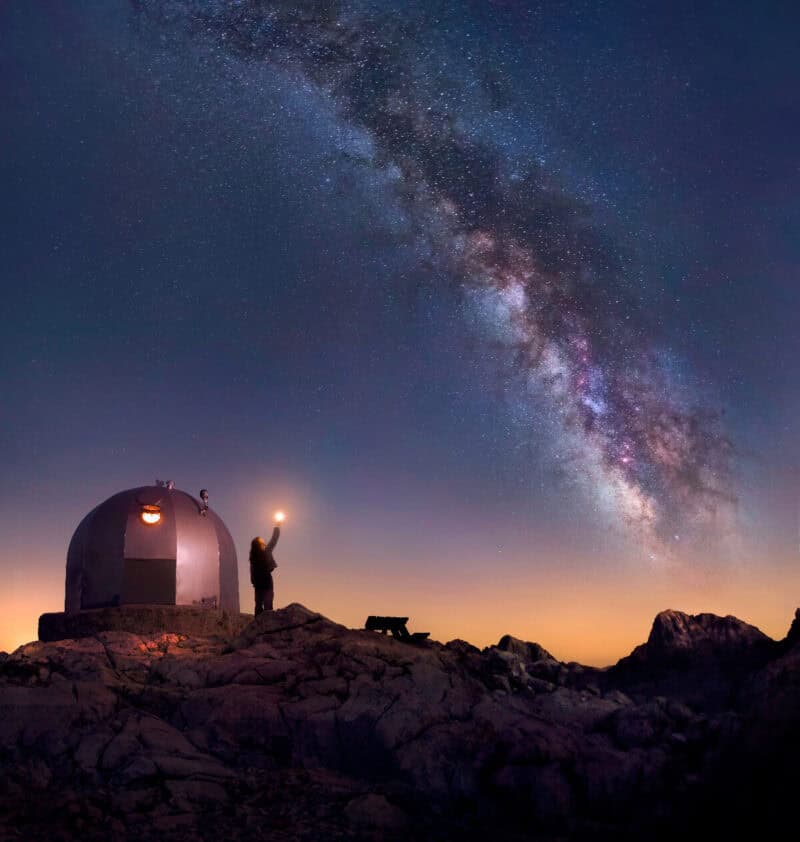
How do you plan your imaging?
The first of all is the inspiration and learning. I take ideas from books, from the works of people I admire.
I guide myself with astronomical ephemeris data and browse social media.
I then check if a target I like is within my reach according to location, experience, time and equipment, and then the planning process starts.
For all my images I use Stellarium. I use it to check how the target will look with the focal length used and how the frame will look with my equipment from my location.
I also learn its exact location in case I am not going to use a computerized system. I investigate its magnitude, characteristics and composition, to know approximately how much integration time I will need to obtain details of that specific target.
If I want to incorporate the landscape I find the location and check the orientation and all the details nights before.
I take notes of all this in my notebook, in a traditional way… I make my sketches, lists so as not to forget anything, etc.
I am very organized with my equipment – especially if I have to travel. I like to prepare it days in advance, and not have to hurry.
I also sometimes use Photopills as a tool to plan milky way, circumpolar (star trails) and other images.
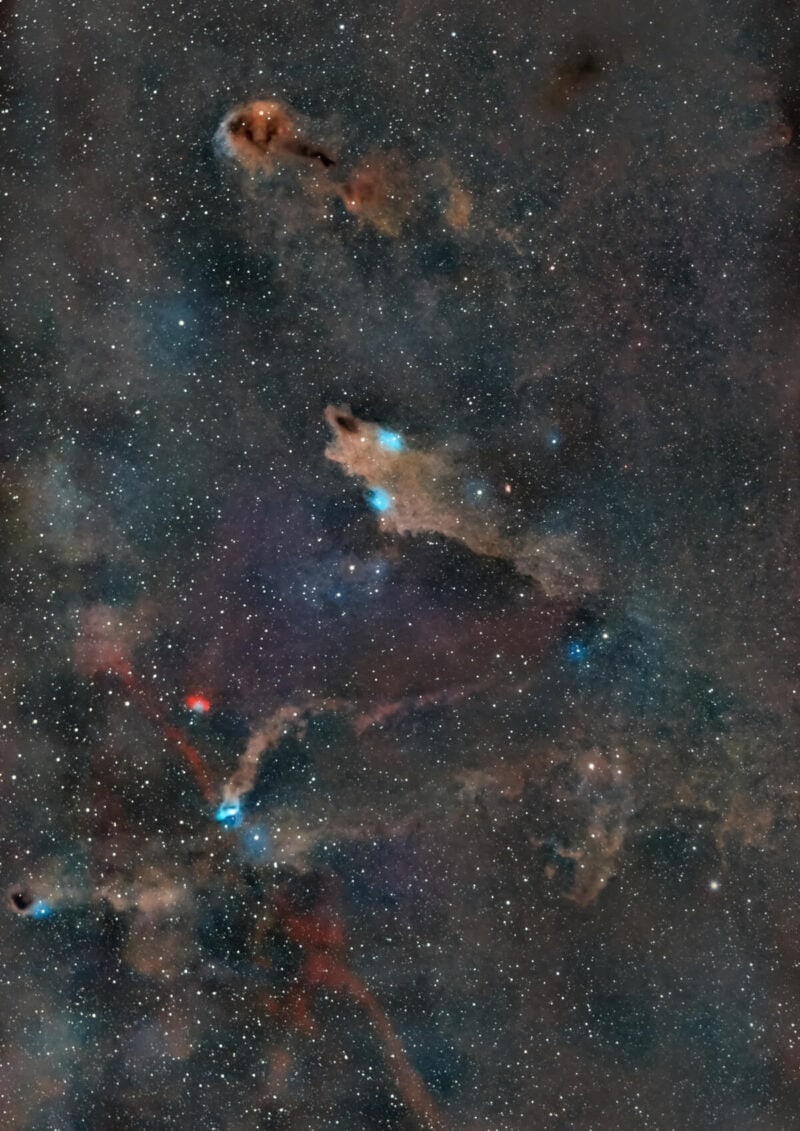
“Moments of crisis dissipate and disappear behind the brightness of a starry sky.”
What gear do you use?
Since starting astrophotography a year ago I have just used the equipment I already had for my other photography work.
This has allowed me to photograph many areas of the sky without making a large investment. Photographing space is something that many people can do!
My equipment consists of two astro-modified Canon cameras (I used DST in Spain for this):
I decided to buy the second camera to use both simultaneously on a dovetail rail and thus make the most of the tracking of my equatorial mount.
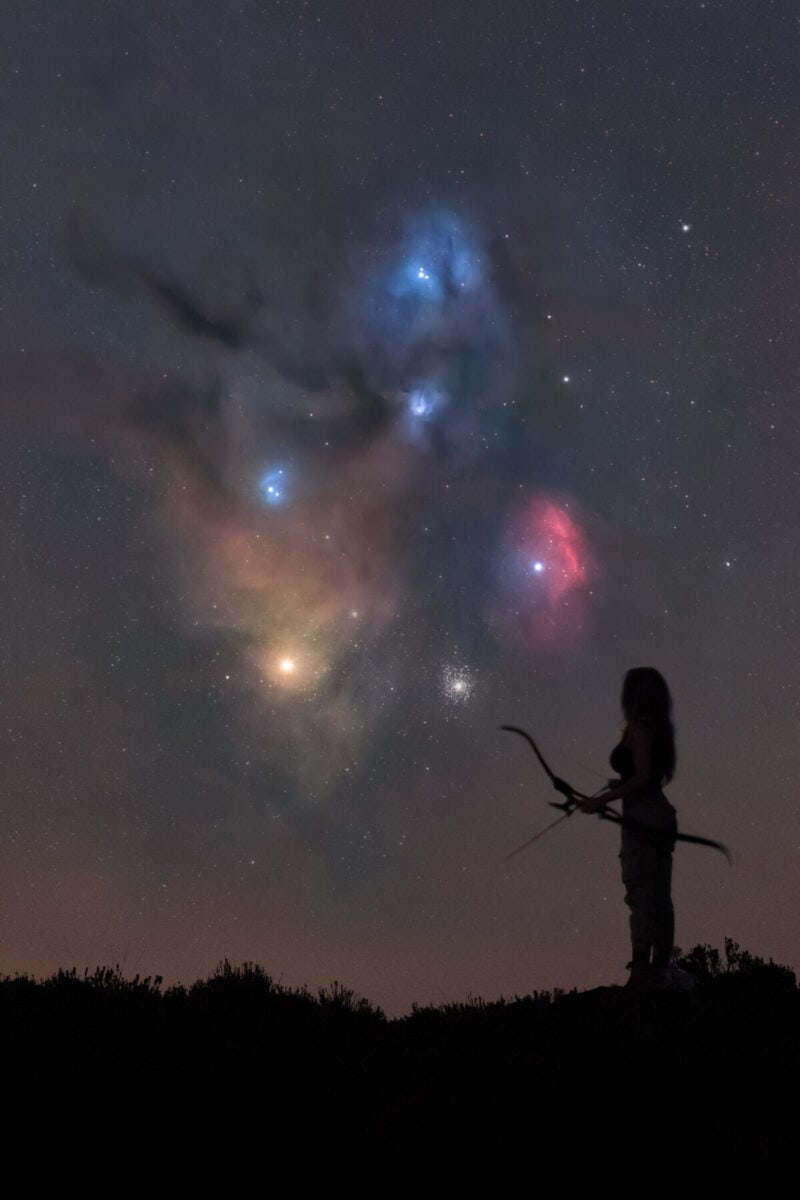
I use the Sigma and Canon lenses I already had, ranging from 24mm to 500mm.
My favorite lens is definitely the Sigma Art 135mm f1.8.
It is a very bright and well-built lens that allows you to include several nebulae and other iconic objects in the same frame. The fields become very interesting and more creative, because it allows you to play with the composition, and that is almost impossible with large focal lengths.
The the only thing I have had to specifically acquire for astrophotography is an equatorial mount for tracking and I use the Sky-Watcher EQM-35.
It is a small and portable mount that allows you to do many things with a lightweight set up, and I think it has already more than paid for itself.
Of course, I use other accessories such as anti-dew heater strips, intervalometers, etc. Also the filters necessary to photograph the sun, my favorite star.
In the near future, I would like to complement my set up with an astrograph telescope that allows me to photograph galaxies and smaller objects in the sky and with which explore planetary photography.
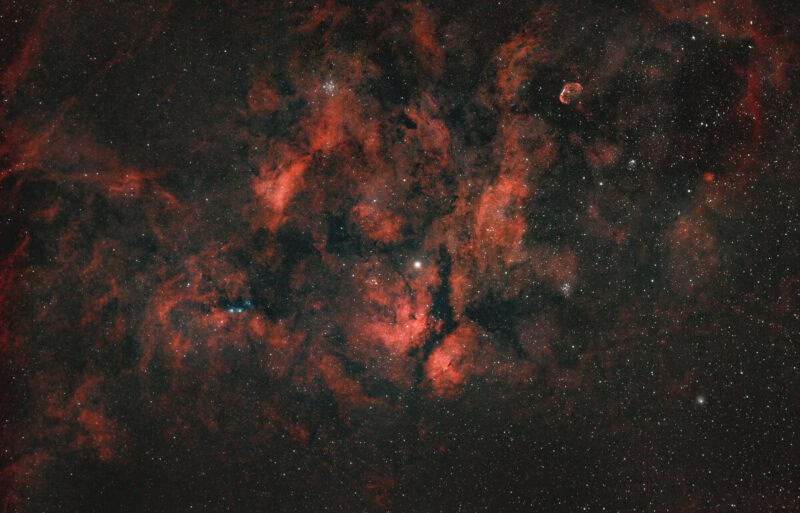
“The best thing is that you can photograph a unique and unrepeatable event. Probably that planetary conjunction with a comet in the composition will never be repeated, and you were there, you lived it, and you captured it.”
What do you do for post-processing?
At the moment, I use Deep Sky Stacker to stack the images, then I make the adjustments before histogram stretching and stretch with Siril.
Afterwards, I make the final adjustments and details in Adobe Photoshop, which I was already familiar with for my work.
In Photoshop, I use the Astronomy Tools plug-in, which can save some time.
My unfinished business is to learn how to use Pinxinsight one day!
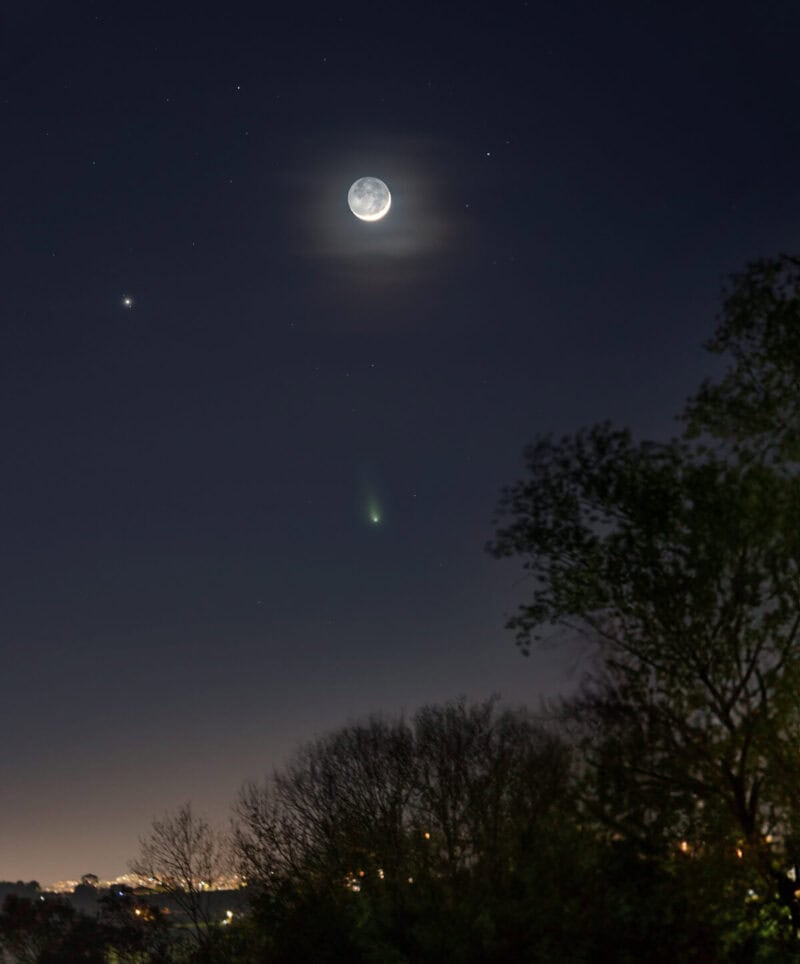
“Don’t compare your results too much with that of others, just enough to improve your work.”
What learning resources do you recommend for others?
For Spanish-speaking people who want to get started in astrophotography, I cannot help but recommend my mentor, Luis Miguel Azorín from the Natural Portraits Academy, I have learned everything from him.
The book “Astrofotografía de Cielo profundo y planetas con cámara a color” by Roberto García Valencia was also my “vade-mecum” of astrophotography.
Of course, the free learning resources are unlimited in English on YouTube, for example Alyn Wallace’s tutorials.
He was a great teacher who recently left us and overwhelmed the entire community. Definitely wonderful and enlightening.
Whenever I have had any doubts, I have asked other hobby friends through forums, social media, WhatsApp or Telegram groups. I think it is essential to be in all of them so as not to feel alone in this.
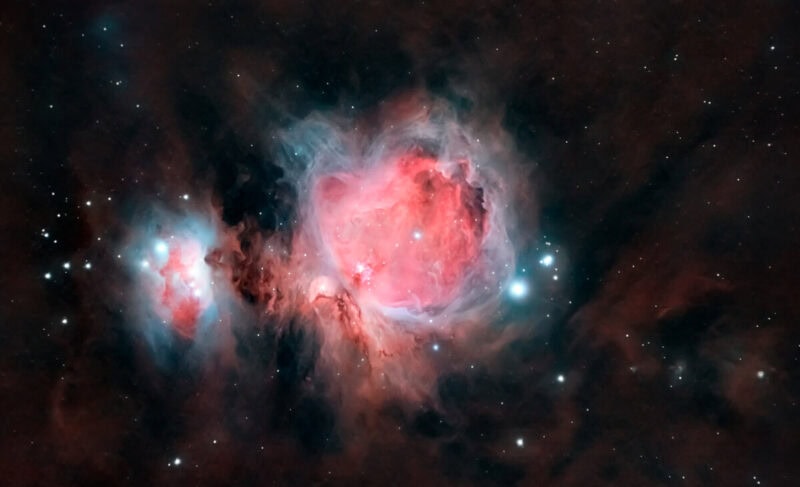
I also highly recommend joining your local astronomical group (I am member of Agrupación Astronómica Cántabra).
Not only because it is rewarding to learn about what we photograph and acquire basic knowledge of astronomy, but because it is very likely that you find an astrophotographer in your area that you didn’t know about and probably they felt lonely too!
I also complement this hobby with distance learning astronomy courses from different universities.
I am interested in learning astronomy and astrophysics and it gives more meaning to what I see and photograph.
This also helps me when explaining to my friends, family and followers what they are seeing when they look at my work.
But my best advice is to live it with passion and to let yourself be impressed by the universe, which never disappoints.
Don’t compare your results too much with that of others, just enough to improve your work. I’m sure you’ll enjoy it a lot more.
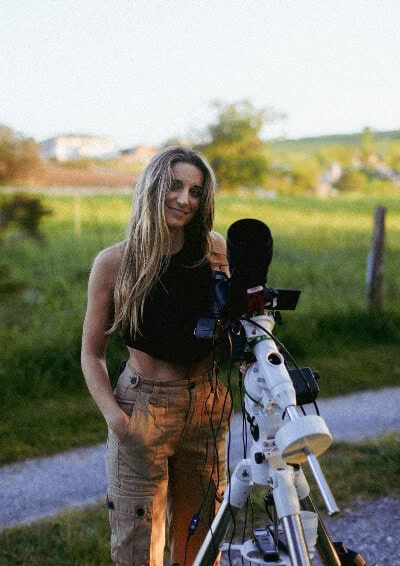
About You – Cayetana Saiz
I am a very passionate person about life. I really like to live intensely and be surprised by nature and feelings.
I am 34 years old and was a very young mother. I have never stopped traveling, enjoying the simplest things and photographing everything.
I really like animals, I have always lived surrounded by them.
I have always liked space since I was a child, but I have also been amazed by things like archaeology, paleontology, Egyptology, and all the great mysteries of history.
I was the typical girl who as a child wanted to be an archaeologist, explorer or inventor.
Learning to photograph space is a true gift, because not only do you feel capable of doing something amazing, but you also feel connected to the universe to which you belong, from which you come.
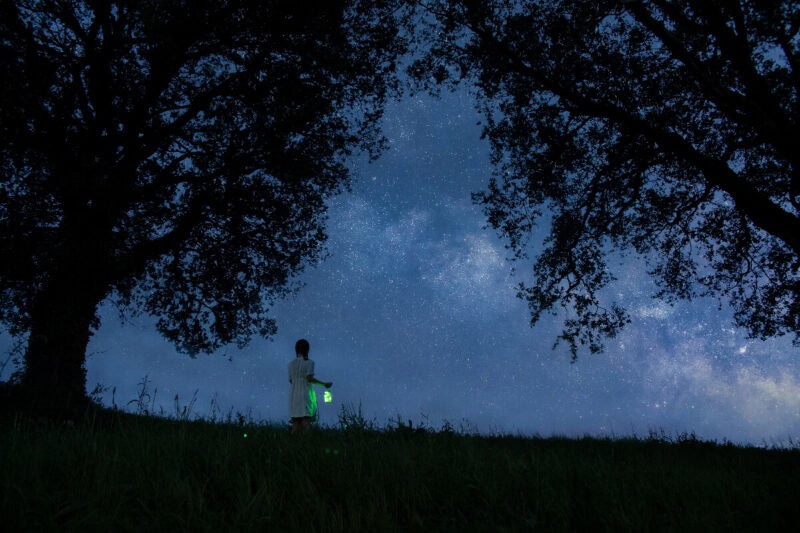
My greatest achievements in this hobby are overcoming difficulties, the silliest boundaries that exist such as…not finding the right cable or the right screw because you use unusual equipment and no one can help you.
Or the fear of being alone at night, or when everything goes wrong and you have no idea why but you find a way!
Without a doubt, those moments of crisis dissipate and disappear behind the brightness of a starry sky.
I have experienced the most beautiful and incredible moments since I started astrophotography.
The best thing is that you can photograph a unique and unrepeatable event. Probably that planetary conjunction with a comet in the composition will never be repeated, and you were there, you lived it, and you captured it.
It will be an honor if people accompany me on this journey through the universe by following me on Instagram @caye.wildvisuals.



